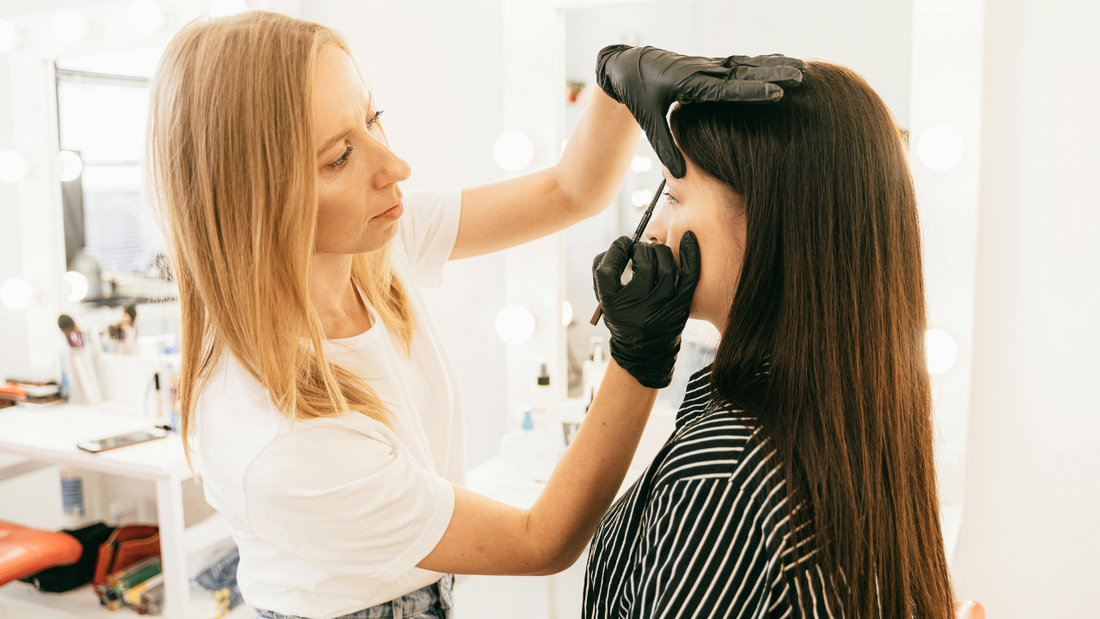
The Ultimate PMU Client Experience Guide: How to Turn First-Timers into Lifelong Clients
Getting permanent makeup is a huge deal for your client and it should feel just as important to you. It’s not just about flawless brows, lips, or liner… it’s about how they feel before, during, and after their appointment. A seamless client experience is what turns first-time clients into raving fans and loyal returners.
Whether you're brand new to PMU or a seasoned pro looking to level up your client care game, this guide breaks it all down step-by-step.

1. Pre-Appointment Communication: Set the Tone From the First Hello
First impressions absolutely matter. Whether it's a DM, a call, or a form on your booking site how you communicate before the appointment sets the tone for the entire experience.
🩷 Be warm, confident, and direct.
🩷 Share the exact info your client needs to know: what the procedure includes, how to prep, and what to expect.
🩷 Got red flags? Trust your gut. If they don’t feel like your client, that’s okay. It’s better to say “I’m not the right artist for you” than deal with stress later.
📌 Pro Tip: Stay professional but don’t water down your personality, authenticity builds trust.

2. The Consultation: Listen, Educate, and Collaborate
A killer consultation is more than just talking it’s about listening. This is your chance to really get to know your client’s goals, fears, and preferences.
✔️ Show healed results and before & after photos
✔️ Offer a pre-draw and explain your color selection process
✔️ Walk them through the procedure and healing phases
This is the moment to shine as an expert. Give them the confidence that they’re in the right hands.
3. Manage Expectations Like a Pro
Let’s be real PMU isn’t magic, it’s a healing process. And managing expectations is your secret weapon.
🩷 Be honest about what’s achievable.
🩷 Explain pigment retention, healing stages, and possible touch-ups.
🩷 Warn them about “brow shock” (yes, it’s real and temporary).
When clients know what to expect, you’ll prevent panic texts and unhappy surprises. Set boundaries and timelines so they stay calm and confident every step of the way.

4. Post-Care Instructions: Clarity is Key
You could create the most beautiful brows ever… but if your client doesn’t follow aftercare? Say goodbye to those results. Clear, detailed post-care is non-negotiable.
🩷 Provide printed and digital instructions
🩷 Include or retail aftercare products you trust
🩷 Let them know what’s normal (itching, flaking) vs. what’s not
✅ And before they walk out the door? Pre-book that touch-up. Even if they don’t end up needing it, you’ve got it on the books and ready to go.
5. Build Long-Term Relationships That Actually Last
You didn’t become a PMU artist just to do one-and-done services. A thriving business is built on repeat clients and referrals. So treat every appointment like the start of something bigger.
🩷 Follow up after healing
🩷 Send birthday messages or seasonal offers
🩷 Recommend new services they might love
Word of mouth is powerful and nothing spreads faster than a client who feels seen, heard, and taken care of.
🌟 Final Thoughts
A seamless client experience isn’t just nice to have it’s what separates good artists from great ones. From your first DM to their healed results, every step matters. And when you nail the process? You’re not just creating beautiful brows you’re creating loyal, lifelong clients.

PMU Client Experience FAQ
Q: How do I politely turn away a client I don’t vibe with?
A: Keep it kind and professional. “Thank you for reaching out, but I don’t think I’m the right artist for you at this time. I wish you the best!”
Q: What should I include in a PMU aftercare kit?
A: A healing balm, gauze or cotton swabs, printed aftercare instructions, and maybe even a discount code for future services or products. Shop our aftercare products:
Q: How soon should I follow up after the procedure?
A: A good rule of thumb is to check in at 48 hours and again around 10 days, when most of the healing has taken place.